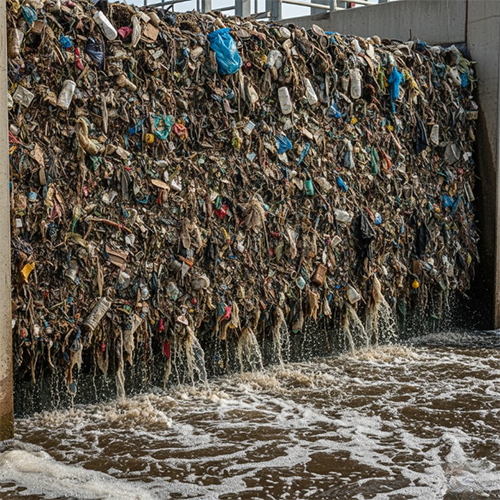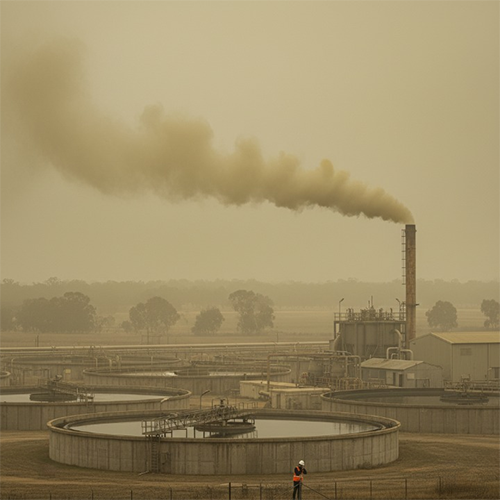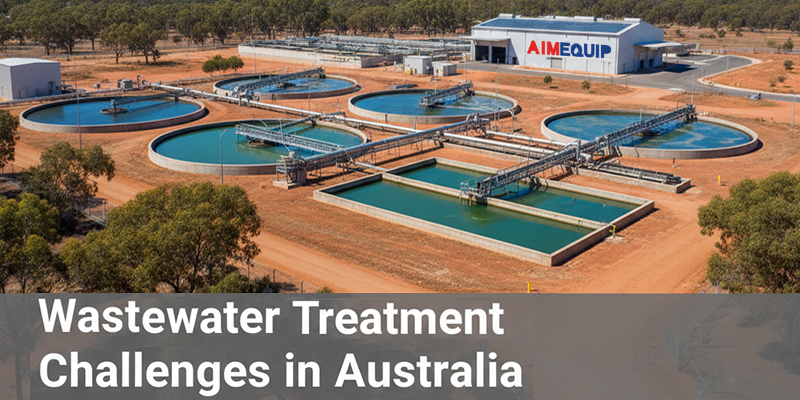According to Melbournewater, there are more than 720 wastewater treatment plants all over Australia, mainly along the western and southern coasts. With a population of more than 27 million and recurring droughts, this number of wastewater treatment plants are necessary. However, there are occasional hurdles that engineers and operational staff must overcome. In the following paragraphs, we explain the common wastewater treatment challenges in Australia and some possible solutions.
Wastewater Treatment Challenges in Australia
1. The Primary Treatment Is Not Proper.
Some equipment fails to remove large solids (paper, plastic, wood, tin) and things like fibres and hair from the water. Once such contaminants accumulate in the plant, the whole facility might be damaged. The initial screening is usually done mechanically, but in smaller and older facilities, the primary treatment is done manually.

2. The Plant Fails Nitrogen Treatment.
If the wastewater isn’t treated properly, it should be tested for ammonia, nitrite, and nitrate. These are different nitrogen compounds, referred to as Total Nitrogen (TN). If the TN level is too high in the water, it means that the plant doesn’t meet compliance standards.
In a well-established system, the ammonia is removed by aerobic bacteria. The wastewater plant must provide enough dissolved oxygen, long retention time, a low F/M (food-to-microorganism) ratio, and enough alkalinity so that the ammonia can be removed successfully.
Once the ammonia is converted to nitrate, the nitrate should then be removed by denitrifying bacteria that grow in low-oxygen environments. If ammonia isn’t fully converted to nitrate, the denitrification doesn’t happen as it is supposed to.
3. The Level of Biochemical Oxygen Demand Is Higher than Normal.
BOD shows how much oxygen the microbesmicrobes need to decompose the organic contaminants (like food particles) in wastewater. A high BOD means there is a greater potential demand for oxygen. If the treatment system does not supply enough oxygen, the microorganisms’ activity can reduce the amount of dissolved oxygen (DO) in the water.
Here are the most common reasons why BOD stays high after treatment:
- The plant isn’t big enough or is overloaded, so it can’t treat everything properly.
- There isn’t enough oxygen in the system.
- The water moves through too quickly, so the microbes don’t have enough time to clean it.
- Too much sludge or algae has grown, so the system cannot work properly.
4. A Foul Smell Comes from the Plant.
This might be the most common wastewater treatment challenge in Australia. If bad odour comes from the sewage treatment system, there is perhaps hydrogen sulphide (H₂S) or acids (generated by certain bacteria) in the water. These odorous gases are extremely corrosive and can cause serious damage to the equipment.
Of course, sometimes the foul smell comes from the uncovered wastewater, and there is nothing wrong with the facility. Therefore, identifying where the odour is coming from is of great importance.

5. The Treated Water Has too much Phosphorus.
If the treated wastewater has too much phosphorus, it doesn’t meet the international standard. The best way to reduce phosphorus is by adding chemicals, like alum or ferric chloride through a chemical dosing system. However, before deciding which chemical works best, you should run a jar test to find the best option for your plant. After finding the proper chemical, you can add it in one of the following ways:
- Pre-precipitation (before the biological process): Add chemicals before the aeration stage, so phosphorus gets removed early in the settling tanks.
- Post-precipitation (after the biological process): Add chemicals at the clarifiers or filters, so phosphorus is removed just before the water is discharged.
- Add chemicals at both stages to reach very low phosphorus levels.
6. Wastewater Treatment Plants Use Too Much Energy.
Wastewater plants use a lot of electricity, especially for pumping and aeration. This not only adds to the expenses but also increases the plant’s carbon footprint. Fortunately, most of the wastewater treatment plants in Australia use energy-efficient technologies to save energy without reducing treatment quality.
7. Unpredictable Weather Damages the Facilities.
Since the early 20th century, Australia has seen more droughts than ever. Also, the rainfall patterns have changed, and there are fewer rainy days throughout the year. These changes make it harder to run treatment plants because the amount and quality of incoming water keep changing. Plus, the heat waves overheat the equipment, and hurricanes, cyclones, and floods damage treatment infrastructure. Therefore, climate change effects are the biggest wastewater treatment challenges in Australia.
In a Nutshell
Wastewater treatment in Australia has come a long way, but it still needs improvement. Sewage primary treatment doesn’t always work well. Large items like paper, plastics, and wood sometimes pass through the system and clog or damage the equipment. High biochemical oxygen demand (BOD) and nitrogen treatment are also challenges in water treatment.
When it comes to the chemical treatment of wastewater, hydrogen sulphide and phosphorus are concerns too. Luckily, AIMEQUIP, a leading Australian provider of advanced wastewater treatment technologies and chemical dosing solutions, has helped overcome many of these challenges with high-standard equipment and innovative solutions. Still, there is a long road to perfection.
FAQs about Wastewater Treatment Challenges in Australia
- What happens if you ignore wastewater treatment challenges?
Ignoring wastewater treatment challenges in Australia can have deadly consequences on humans, flora, and fauna. Spreading bacteria, viruses, and parasites and entering toxic chemicals into the drinking water are small examples of what will happen to humans and the environment.
- Which part of wastewater treatment is the hardest?
All stages of wastewater treatment are hard and important. However, removing micropollutants has been a very difficult and costly step during the last couple of years. Many Australian facilities were not designed to remove the complex chemicals now found in wastewater. Pharmaceutical residues, hormones, and personal care products are instances of micropollutants.
- What blocks the wastewater plants the most?
Grease, rocks, plastic bags, and sanitary products (mostly tampons and wet wipes) usually clog the wastewater plants and damage the equipment.

